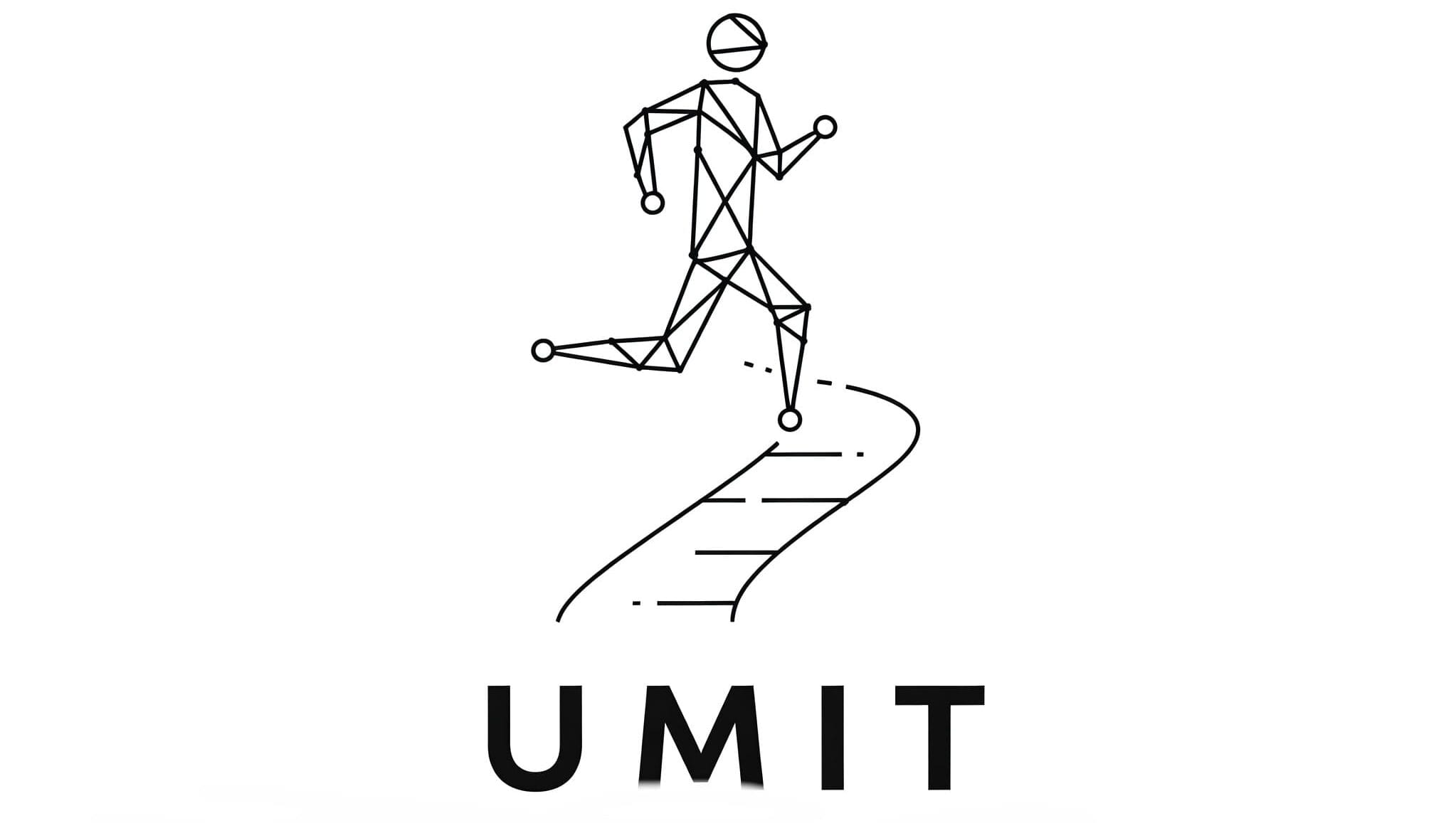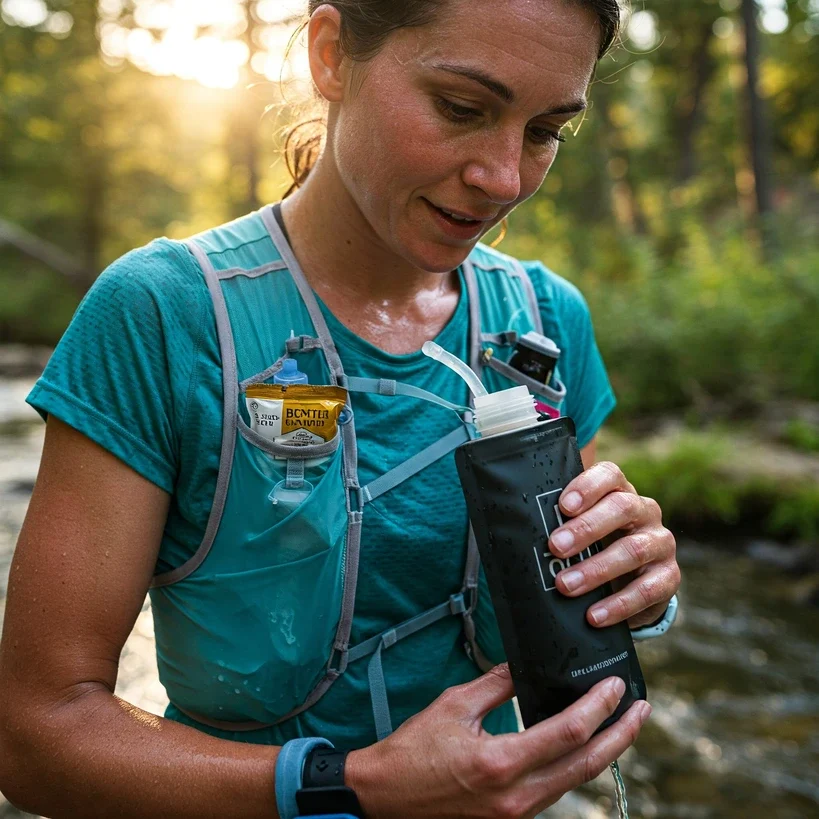Introduction: Why Nutrition and Hydration Make or Break Your Ultramarathon
Training hard and racing smart are only part of the ultramarathon equation.
Without a dialed-in ultramarathon nutrition strategy, even the fittest athletes can crumble long before the finish line.
Fueling your body correctly is not just about energy —
it’s about survival, performance, and making it through the darkest miles. ♂️
Why Nutrition Matters in Ultramarathons
In an ultra-distance race, your body undergoes:
-
Massive Caloric Depletion:
Burning 500–900 calories per hour is common. -
Glycogen Depletion:
Muscle glycogen stores run low, risking “bonking” (sudden energy collapse). -
Electrolyte Loss:
Through sweat, you lose vital salts like sodium, potassium, magnesium. -
Gastrointestinal Stress:
Your gut must process food and liquids while under intense physical strain.
Pro Tip:
You’re not just racing your legs — you’re racing your gut’s ability to absorb and utilize fuel.
Why Hydration Strategy Is Equally Critical
-
Dehydration:
Even a 2% loss in body weight due to fluid loss can significantly impair performance. -
Overhydration:
Drinking too much without balancing electrolytes can lead to hyponatremia — a dangerous and potentially fatal condition. -
Temperature Regulation:
Proper hydration helps your body manage heat, especially in desert or tropical ultras.
Common Nutrition & Hydration Mistakes in Ultras
-
Not practicing fueling during training (“I’ll figure it out on race day” = disaster.)
-
Relying solely on aid station food without a personalized plan.
-
Neglecting electrolyte replacement leading to cramping, nausea, or confusion.
-
Forgetting to adjust nutrition for altitude, cold, or extreme heat.
Motivational Vibe:
Your race is won or lost in the tiny moments: the right sip, the right bite, the right plan when your mind is fading. ️
What This Guide Will Teach You
In this ultra-specific guide, you’ll learn:
✅ How to calculate calorie needs for different ultra distances.
✅ How to time carbohydrate, fat, and protein intake.
✅ How to build your own custom race-day fueling plan.
✅ How to hydrate effectively in different environments.
✅ How to troubleshoot common gut problems mid-race.
✅ How elite ultrarunners fuel and recover smarter.
Final Words of Introduction
Ultramarathon nutrition and hydration strategy isn’t a side project.
It’s your secret weapon.
Master it —
and no summit, no storm, no endless stretch of lonely trail will break you.
️♂️
Understanding Caloric Needs in Ultramarathons
You can’t fight biology.
If you don’t replace what your body burns during an ultramarathon, it will shut you down — brutally and without mercy.
Let’s dive deep into how your body fuels itself during an ultra, and how you can stay ahead of the crash. ♂️
⚙️ How the Body Fuels Endurance Efforts
Your body relies primarily on two energy systems during an ultramarathon:
-
Carbohydrates (Glycogen):
-
Fast, efficient energy.
-
Limited storage (~90–120 minutes at race intensity).
-
-
Fat Stores:
-
Massive, but slower to mobilize.
-
Becomes a bigger player during long, steady efforts.
-
Pro Tip:
You are always burning a mix of carbs and fat — but the faster you run, the more carbs you use. ⚡
The Ultra Problem: Limited Glycogen
-
Even elite runners can’t store enough carbohydrates to fuel a 6-hour, 12-hour, or 24-hour effort.
-
Without fueling, you’ll bonk — a full system shutdown of mind, muscles, and spirit.
How Much Energy Are You Burning?
Typical caloric burn during ultrarunning:
| Effort Level | Calories Burned Per Hour |
|---|---|
| Easy/Steady Effort | 400–600 calories |
| Moderate/Competitive Effort | 600–800 calories |
| High-Intensity Mountain Racing | 800–1000+ calories |
How Much Should You Replace During the Race?
You cannot replace everything you burn during an ultramarathon (the gut can’t absorb fast enough).
Instead, aim to replace about:
-
30–50% of calories burned per hour
-
Typically 200–300 calories per hour for most runners
Pro Tip:
Ultra success isn’t about full replacement — it’s about delaying depletion just enough to survive and keep moving strongly.
Macronutrient Breakdown for Racing
During ultramarathons, focus primarily on:
-
Carbohydrates: 85–90% of your intake (simple sugars preferred for faster absorption).
-
Fats: Minor but useful, especially in slower paces and longer races (some real foods like nut butters).
-
Proteins: Very minimal during the race (~5–10%) — mainly helpful in 100-mile events to minimize muscle breakdown.
Bonus: Factors That Affect Fuel Needs
-
Pace: Faster = more carbs needed.
-
Temperature: Hot = more hydration stress, may limit eating capacity.
-
Altitude: Higher = reduced gut function, appetite suppression.
-
Duration: Longer = more risk of fueling errors compounding.
Fun Fact:
In a 100-mile race, some runners burn over 15,000 calories — that’s about 50 cheeseburgers worth of energy.
Final Blueprint for Fuel Planning
Understand what you burn.
Understand what you can replace.
Train your gut to handle the gap.
Fuel smart = finish strong.
️♂️
️ Best Foods and Drinks for Ultramarathon Fueling
Fueling an ultramarathon isn’t just about calories —
it’s about what your body can tolerate, digest, and actually use under extreme stress.
Let’s explore the best options for fueling your ultra journey — real foods, sports nutrition products, and liquid calories. ♂️
Option 1: Sports Drinks and Liquid Nutrition
Pros:
-
Easy to consume while running.
-
Quick absorption.
-
Provides fluids, electrolytes, and carbs all in one shot.
Cons:
-
Risk of overhydration if relying solely on sports drinks.
-
Some runners experience GI distress from too much liquid sugar.
Top Choices:
-
Tailwind Nutrition
-
Maurten Drink Mix
-
Skratch Labs Hydration Mix
Pro Tip:
Liquid calories can be a lifesaver in the later stages when chewing solid food becomes unbearable.
Option 2: Gels and Chews
Pros:
-
Highly portable and compact.
-
Easy to calculate calorie and carb intake.
-
Quick energy spike.
Cons:
-
Can cause nausea or taste fatigue over hours.
-
May require separate water intake to avoid gut distress.
Top Choices:
-
GU Energy Gels
-
Huma Chia Energy Gels
-
Clif Shot Bloks
-
Spring Energy (natural-based gels)
Option 3: Real Foods
Pros:
-
More palatable over long hours.
-
Offers a broader range of macronutrients (small amounts of fat and protein).
-
Satisfies psychological cravings (salty, savory).
Cons:
-
Harder to digest while moving fast.
-
Risk of gut overload if portions are too large.
Ultra-Proven Real Foods:
-
Bananas
-
Peanut butter and jelly sandwiches
-
Potato chips (sodium + calories)
-
Boiled potatoes with salt
-
Rice balls or sushi rolls
-
Soft cookies
-
Cheese sticks
-
Salted nuts
-
Broth or ramen soup (especially at night)
Option 4: Hybrid Strategy (Best Practice!)
Most experienced ultrarunners use a mix of liquids, gels, and real foods throughout the race.
Typical Pattern:
-
First 4–6 hours: Gels + sports drinks (quick energy, easy digestion).
-
Middle Hours: Transition to real foods + occasional gels.
-
Late Race: Sip broths, take small bites of calorie-dense foods, maintain liquid calories when chewing becomes hard.
️ Key Tips for Choosing Ultra Fuel
-
Train with everything you plan to eat on race day. No experiments!
-
Monitor sweetness fatigue: Switch between sweet and salty foods.
-
Carry backup options: If one fuel source fails (e.g., you can’t stomach gels anymore), you need Plan B.
-
Size matters: Small bites are easier to manage late in races.
Motivational Vibe:
In ultramarathons, calories are courage — fuel your fire, mile after mile.
Final Blueprint for Ultra Fueling Choices
There’s no one perfect fuel.
There’s only what your body accepts — and what keeps you moving forward.
Master your fueling game.
Survive the lows.
Fly through the finish.
️♂️
️ Building a Personalized Nutrition Plan for Ultramarathons
One-size-fits-all fueling plans?
Forget them.
The truth is simple:
Your best ultramarathon nutrition strategy is custom-built around your unique body, pace, and gut tolerance.
Let’s build it piece by piece — smart, strategic, bulletproof. ♂️
Step 1: Calculate Your Target Intake
Remember:
You’re aiming to replace around 30–50% of the calories you burn each hour.
Typical intake goals:
-
200–300 calories per hour for most runners.
-
May need more in cold races, or slightly less in hot and humid conditions.
Pro Tip:
When in doubt, start low (e.g., 180–200 calories/hour) and increase gradually based on training feedback.
⏱️ Step 2: Timing Your Fuel Intake
Instead of stuffing in big meals, aim for small, frequent doses.
Ideal Pattern:
-
Every 20–30 minutes:
-
Small sips of sports drink, or
-
Small bites of real food, or
-
One gel every 40–45 minutes
-
Golden Rule:
Never let yourself “feel hungry” in an ultra — if you’re hungry, you’re already under-fueled.
Step 3: Match Nutrition to Hydration
Your fueling and hydration plans must sync:
-
Gels need water! Always chase gels with several sips of plain water.
-
Liquid fuels (like Tailwind) cover both calories and hydration — adjust accordingly.
-
Electrolytes must be factored into both liquids and solids to prevent hyponatremia.
Balance Tip:
Plan fueling and drinking on the same interval (e.g., sip fluid every 10–15 min, eat every 30 min).
Step 4: Test Everything in Training
Training isn’t just for your legs — it’s for your gut.
What to Practice:
-
Your exact race fuel and hydration brands/products.
-
Timing intervals.
-
Eating under effort — especially on long runs and back-to-back days.
-
Adjustments for different weather conditions.
Checklist for Every Long Run:
✅ Use race-day gear (vest, bottles, bladders).
✅ Carry the exact fuels you plan to use.
✅ Simulate race-day effort level.
✅ Track what works and what causes issues (nausea, bloating, energy crashes).
Red Flags to Watch During Training
-
Burping, bloating, nausea → Adjust quantity or switch products.
-
Stomach sloshing → Too much liquid intake at once.
-
Energy crashes → Too few carbs per hour.
-
Severe cramping → Potential electrolyte imbalance.
️ Emergency Plan: “What If My Gut Shuts Down?”
Even the best nutrition plans can go sideways at ultras.
Have backups ready:
-
Sip diluted sports drink.
-
Switch to broth or light salty foods.
-
Focus on hydration first, then slowly reintroduce calories.
Final Blueprint for Personalized Fueling
Train your gut like you train your legs.
Dial it in, test it in battle, and trust it when the race goes dark.
Personalized fueling =
More miles.
Less suffering.
Bigger finish-line smiles. ️
Hydration Strategy Deep Dive for Ultramarathons
Running an ultramarathon isn’t just a battle against distance —
it’s a constant, strategic battle against dehydration, electrolyte loss, and overheating.
Let’s break down exactly how to hydrate like a pro when the miles stack up and the stakes get serious. ♂️
Why Hydration is Critical in Ultramarathons
-
Dehydration:
-
Even a 2–3% loss in body weight from sweat significantly reduces endurance performance.
-
Dehydration increases heart rate, perceived effort, and risk of heat-related illnesses.
-
-
Hyponatremia (Overhydration):
-
Drinking too much water without replacing electrolytes can dilute blood sodium levels.
-
Symptoms include nausea, bloating, confusion, seizures — and in severe cases, death.
-
Pro Tip:
Good hydration isn’t about drinking gallons of water — it’s about managing fluids, salts, and body needs intelligently.
How Much to Drink Per Hour
-
General guideline:
-
400–800 ml/hour (13–27 oz/hour), depending on heat, humidity, body size, and effort.
-
-
Factors That Affect Needs:
-
Heat and humidity ➔ more fluid loss.
-
High altitude ➔ faster dehydration.
-
Heavier sweaters ➔ greater fluid and sodium replacement needed.
-
Pro Tip:
Practice sweat rate testing: Weigh yourself before and after a training run (without drinking), and calculate how much fluid you lose per hour.
Electrolyte Replacement: The Silent Key
Sweat doesn’t just remove water — it removes critical salts.
Key electrolytes:
-
Sodium (most important!)
-
Potassium
-
Magnesium
-
Calcium
Typical Sodium Loss:
-
500–1500 mg of sodium per liter of sweat lost.
️ How to Replace Electrolytes
-
Electrolyte tablets or capsules: (e.g., SaltStick, S!Caps)
-
Sports drinks with sodium: (e.g., Skratch, Tailwind)
-
Salty real foods: Broth, salted potatoes, chips.
Rule of Thumb:
-
Aim for 300–700 mg of sodium per hour, adjusted for sweat rate and weather.
Fun Fact:
At races like Badwater 135 (across Death Valley!), runners may consume 1000 mg+ sodium per hour to survive extreme heat.
Common Hydration Mistakes to Avoid
-
Chugging water without electrolytes.
-
Waiting until thirsty: Thirst lags behind actual fluid needs during endurance events.
-
Guessing fluid needs: Practice measuring during training!
-
Ignoring gut feedback: Bloating = back off fluids; cramping = maybe more sodium needed.
How to Train Your Hydration Strategy
-
Drink on a schedule during long runs (every 10–15 minutes).
-
Combine sips of water + electrolyte solutions.
-
Practice hot-weather runs to fine-tune salt needs.
-
Adjust hydration during mountain or cold-weather races — don’t rely on “one rule fits all.”
Final Blueprint for Smart Hydration
Hydration strategy isn’t optional in ultramarathons.
It’s your survival system.
Balance fluids.
Respect electrolytes.
Stay ahead of thirst.
Master it — and run further, faster, and safer.
️♂️⚡
️ Troubleshooting Common Nutrition and Hydration Problems During Ultramarathons
Even with the best-laid fueling plans,
ultras have a brutal way of throwing unexpected gut punches — literally and figuratively.
The best runners aren’t those who avoid problems —
it’s those who fix them fast and keep moving forward. ♂️
Let’s get you ready for every fueling and hydration challenge the trail can throw at you.
Problem 1: Nausea and Vomiting
Causes:
-
Overheating
-
Dehydration or overhydration
-
Too much sugar intake at once
-
Gut shut down from intensity or altitude
️ Fix It:
-
Slow your pace — lower your core temperature and gut stress.
-
Sip plain water or diluted electrolyte drink — stop forcing food.
-
Try salty, bland foods (pretzels, broth) instead of sugary gels.
-
Let your stomach settle, then restart with small amounts.
Pro Tip:
Sometimes, 5–10 minutes of walking + cool sips can completely turn a race around.
Problem 2: Dehydration
Symptoms:
-
Extreme thirst
-
Dry mouth, dizziness
-
Weakness, dark urine
️ Fix It:
-
Increase small, frequent sips of water + electrolyte mix.
-
Stay cool — seek shade if possible.
-
Avoid slamming large volumes at once (can shock the gut).
-
Back off pace to reduce fluid loss.
Problem 3: Hyponatremia (Low Sodium)
Symptoms:
-
Swelling (hands, feet, face)
-
Nausea, confusion, disorientation
-
Headaches
️ Fix It:
-
STOP drinking plain water immediately.
-
Take electrolyte capsules or salty foods.
-
Drink sports drink with sodium, not plain fluids.
-
If severe, seek medical help — hyponatremia can be life-threatening.
Fun Fact:
Hyponatremia is one of the few conditions where drinking more water makes the problem worse.
Problem 4: Energy Crashes (“Bonking”)
Symptoms:
-
Sudden extreme fatigue
-
Dizziness, inability to focus
-
Shaky legs, loss of willpower
️ Fix It:
-
Take 100–200 calories ASAP (gel, sports drink, banana).
-
Slow down temporarily to allow digestion and absorption.
-
Hydrate slowly alongside eating — dehydration can make bonking worse.
Motivational Vibe:
When the lights go out inside your head — fight back with sugar, salt, and stubbornness. ♂️
Emergency Checklist: Mid-Race Problem Solving
If something goes wrong:
-
Slow Down: Give your gut and brain breathing space.
-
Diagnose: Dehydration? Low calories? Low sodium? Overheating?
-
Act Decisively: Small corrections are faster than major meltdowns.
-
Stay Positive: Your race isn’t over — it’s just evolving.
Final Blueprint for Troubleshooting Ultras
Expect problems.
Train for them.
Master them.
Fuel like a pro.
Hydrate like a champion.
Adapt like a warrior.
And remember —
it’s not the strongest or the fastest who win ultras.
It’s the best problem solvers.
️♂️️

About the Author
Lost Pace is an ultramarathon runner, shoe-tester and the founder of umit.net. Based year-round in Türkiye’s rugged Kaçkar Mountains, he has logged 10,000 + km of technical trail running and completed multiple 50 K–100 K ultras.
Blending mountain grit with data, Lost analyses power (CP 300 W), HRV and nutrition to craft evidence-backed training plans. He has co-written 260 + long-form guides on footwear science, recovery and endurance nutrition, and is a regular beta-tester of AI-driven coaching tools.
When he isn’t chasing PRs or testing midsoles, you’ll find him sharing peer-reviewed research in plain English to help runners train smarter, stay healthier and finish stronger.
Ultrarunner · Data geek · Vegan athlete

